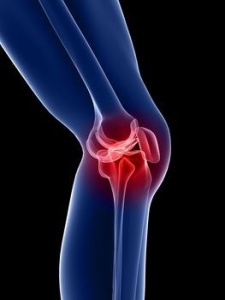In the dynamic world of sports, ACL (anterior cruciate ligament) injuries are a common and often highlighted concern. However, the significance of these injuries extends beyond the realm of athletics, particularly into the lives of the elderly. As caregivers and in-home care professionals, understanding the nuances of ACL injuries, their prevention, and management is crucial in providing comprehensive care to seniors, including those with conditions like dementia.
Understanding the ACL and Its Role in Knee Stability
The ACL is one of the four major ligaments in the knee, connecting the tibia to the femur. It plays a critical role in ensuring knee stability, preventing the tibia from sliding out of place, and providing rotational stability. Positioned between the menisci, which act as shock absorbers, the ACL is integral to the overall function and health of the knee joint.
Symptoms and Impact of ACL Injuries in the Elderly
While commonly associated with sports, ACL injuries can occur in the elderly due to falls or sudden movements. Symptoms include knee swelling, pain, and a feeling of instability in the knee joint. In severe cases, the knee may “give out,” leading to increased risk of falls and further injury. Understanding these symptoms is vital for early detection and intervention.
Causes of ACL Injuries in Seniors
ACL injuries in seniors can result from various factors, including reduced muscle strength, balance issues, and the general wear and tear of aging. Unlike athletes, where direct contact or sudden movements often cause injuries, in seniors, simpler actions like missteps or falls can lead to ACL damage.
Preventing ACL Injuries in Elderly Care
Prevention of ACL injuries in the elderly involves a multifaceted approach:
- Strength and Stability Exercises: Focusing on exercises that enhance leg strength, particularly in the hamstrings and quadriceps, can provide better support to the knee.
- Balance Training: Incorporating balance exercises into daily routines can reduce the risk of falls, a common cause of knee injuries in seniors.
- Safe Environment: Ensuring that living spaces are free of trip hazards and equipped with aids like handrails can significantly reduce the risk of falls.
The Role of Caregivers in Managing ACL Injuries
Caregivers play a crucial role in both preventing and managing ACL injuries in the elderly:
- Regular Monitoring: Keeping an eye on any signs of knee pain or discomfort, which could indicate an ACL issue.
- Assisting with Exercises: Helping seniors with their exercise routines to ensure they are performed safely and effectively.
- Emergency Response: Being prepared to respond appropriately in case of falls or sudden knee injuries.
ACL Injuries and Dementia Care
For seniors with dementia, understanding and communicating pain or discomfort from an ACL injury can be challenging. Caregivers need to be particularly vigilant in observing any changes in mobility or behavior that may indicate knee problems.
Treatment Options for ACL Injuries in the Elderly
Treatment for ACL injuries in seniors typically focuses on non-surgical methods, given the risks associated with surgery in older adults. These may include:
- Physical Therapy: To strengthen the muscles around the knee and improve joint stability.
- Pain Management: Using medications or other pain management techniques to alleviate discomfort.
- Use of Supportive Devices: Such as braces or walking aids to stabilize the knee.
When to Seek Medical Attention
Any knee injury in the elderly should be evaluated by a medical professional. They can provide a proper diagnosis, recommend treatment options, and refer to specialists if necessary.
Incorporating Technology in ACL Care
Leveraging technology, such as wearable devices that monitor movement and stability, can be beneficial in both preventing and managing ACL injuries in seniors.
Continuous Education for Caregivers
Caregivers should stay informed about the latest developments in ACL injury prevention and care. This includes understanding the anatomy of the knee, the mechanics of injuries, and the latest treatment and rehabilitation techniques.
Building a Support Network
Creating a supportive environment involving family members, healthcare professionals, and community resources can enhance the care and recovery process for seniors with ACL injuries.
Conclusion
ACL injuries, while commonly associated with sports, are a significant concern in elder care. Understanding these injuries, their prevention, and effective management strategies are essential for caregivers and in-home care professionals. By adopting a holistic approach that encompasses exercise, safety measures, and continuous education, we can ensure that our elderly loved ones receive the best possible care, maintaining their mobility, independence, and quality of life.




